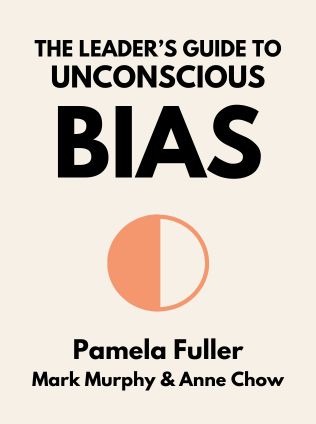
The Leader’s Guide to Unconscious Bias
How to Reframe Bias, Cultivate Connection, and Create High-Performing Teams
By Mark Murphy, Anne Chow, Pamela Fuller
Published 11/2020
About the Author
Pamela Fuller is FranklinCovey’s thought leader on unconscious bias and the lead architect of its organizational solution. She is also one of the firm’s top global sales leaders. Mark Murphy is a senior consultant at FranklinCovey, with nearly three decades of experience facilitating content for clients worldwide. Anne Chow is the CEO of AT&T Business, overseeing an organization of over 30,000 employees and serving nearly 3 million business customers globally.
Main Idea
The Leader’s Guide to Unconscious Bias: How to Reframe Bias, Cultivate Connection, and Create High-Performing Teams by Pamela Fuller, Mark Murphy, and Anne Chow explores the pervasive impact of unconscious bias in the workplace. It provides practical strategies for leaders to identify and overcome their biases, fostering a more inclusive and high-performing organizational culture. By emphasizing self-awareness, empathy, and connection, the book offers tools to unlock the full potential of every employee.
Table of Contents
- Introduction
- What Leaders Need to Know About Unconscious Bias
- Identify Bias
- Cultivate Connection
- Choose Courage
- Apply Across the Talent Lifecycle
- Conclusion
Introduction
Unconscious bias affects everyone and influences our decisions and interactions in ways we may not realize. The book starts by explaining that biases are natural mental shortcuts that help us process vast amounts of information quickly. However, these biases can also lead to inaccurate judgments and limit professional opportunities.
“To be human is to have bias. If you were to say, ‘I don’t have bias,’ you’d be saying your brain isn’t functioning properly!” - Pamela Fuller
The introduction aims to inspire and motivate readers, reassuring them that recognizing and addressing unconscious bias is a crucial step toward creating a more inclusive and effective workplace. By understanding how biases form and operate, leaders can begin to dismantle the barriers that prevent their teams from reaching their full potential.
What Leaders Need to Know About Unconscious Bias
Biases can be positive, benign, or negative. Unconscious biases, also known as implicit or cognitive biases, influence our decisions about people based on their gender, race, age, and other characteristics. These biases can limit opportunities across the Talent Lifecycle, from hiring to promotions. The good news is that our brains are capable of change and growth, allowing us to create new ways of thinking.
“Bias is a preference for or against a thing, person, or group, compared with another.” - Pamela Fuller
This section emphasizes the importance of awareness in overcoming bias. Leaders must first acknowledge their biases before they can take steps to mitigate their effects. The authors provide an overview of how biases manifest in various forms, such as affinity bias, confirmation bias, and primacy bias, each of which can significantly impact decision-making processes.
Sign up for FREE and get access to 1,400+ books summaries.
You May Also Like
The Subtle Art of Not Giving a F*ck
A Counterintuitive Approach to Living a Good Life
By Mark MansonRich Dad Poor Dad
What the Rich Teach Their Kids About Money - That the Poor and Middle Class Do Not!
By Robert T. KiyosakiHow To Win Friends and Influence People
The All-Time Classic Manual Of People Skills
By Dale CarnegieQuiet: The Power of Introverts
The Power of Introverts in a World That Can't Stop Talking
By Susan Cain



















